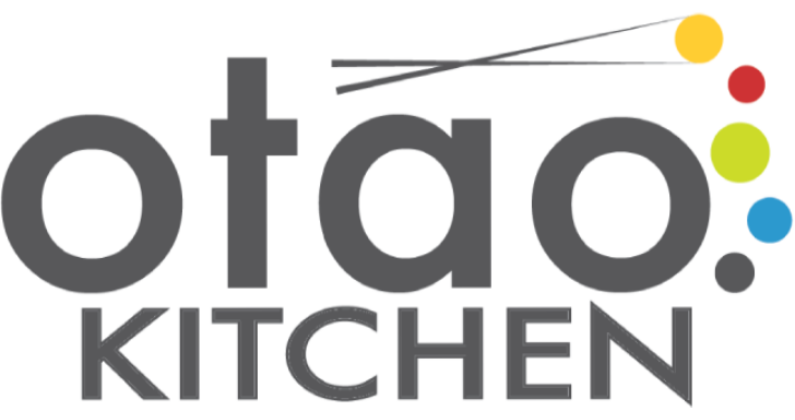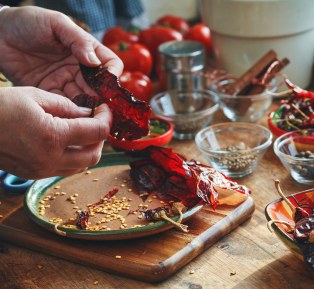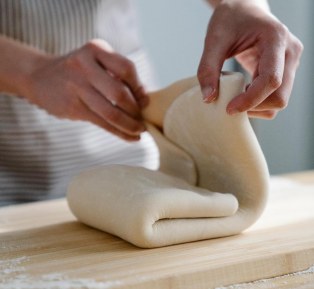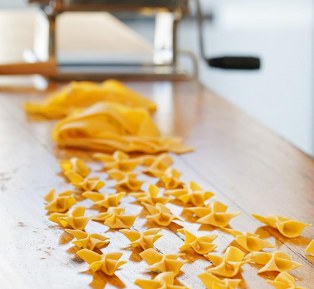
Culinary Inspiration by Otao Kitchen
Cook . Connect. Celebrate
At Otao Kitchen, we believe cooking is one of the most powerful ways to connect—with yourself, your loved ones, and the world around you. It can put a smile on your face, bring family and friends together, and create memories that last a lifetime.
But cooking is more than just connection—what you choose to cook and eat impacts your health and the health of the planet. That’s why we’re passionate about making it as easy and enjoyable as possible for everyone to experience the joy of good, home-cooked food.
“Cook to Connect” is at the core of everything we do. Through our blog, food experiences, and global travel inspiration, we explore the deep relationships between cuisine, culture, and community. From vibrant street food across the globe to time-honoured family recipes passed through generations, we share with you the stories, flavours, and traditions that shape the way the world eats.
Here, you’ll find:
Practical cooking tips and techniques
Authentic global recipes
Cultural and culinary insights
Event planning advice
Kid-friendly cooking inspiration
Travel stories and destination food guides
Seasonal celebrations and global food festivals
Whether you're in your home kitchen or exploring a faraway land, we’re here to help you cook with purpose—and connect with the world through food.
What Is Garam Masala? Everything You Need to Know
What Is Garam Masala? Everything You Need to Know
If you enjoy Indian cuisine, chances are you’ve come across garam masala — a warm, fragrant spice blend that adds depth and complexity to curries, soups, stews, and marinades. Whether you have a jar in your pantry or you're curious to make your own, let’s explore what makes this spice mix so special.
What Is Garam Masala?
Garam masala literally means “hot spices” in Hindi — but not hot as in spicy. Instead, the “heat” refers to the warming qualities of the spices on the body, according to Ayurvedic tradition. It’s a staple in North Indian cooking, where it’s used as a finishing spice or stirred in while cooking to enhance flavour.
This aromatic blend typically includes cardamom, cinnamon, cloves, cumin, coriander seeds, black peppercorns, and nutmeg. Some regional variations also use mace, fennel seeds, bay leaves, or mustard seeds. Each household or restaurant may have its own unique version, so garam masala can taste slightly different every time you try it.
3 Healthy Cooking Class Ideas For Your Kids
3 Healthy Cooking Class Ideas For Your Kids
Fun, hands-on learning that inspires lifelong healthy habits
As parents, we all want to raise happy, healthy kids who know how to look after themselves — and that includes learning how to cook! Cooking classes not only teach practical life skills but also build confidence, creativity, and positive eating habits.
At Otao Kitchen, our kids' cooking classes are designed to be fun, educational, and most importantly, healthy. Below are three popular and healthy cooking class ideas that your kids will love — and you can book them right now.
Gas vs Charcoal: Mastering the Art of BBQ Grilling
Gas vs Charcoal: Mastering the Art of BBQ Grilling
The debate between gas and charcoal grilling has been raging for decades. Which is better? The answer isn’t so simple—it depends on your priorities: flavour, convenience, cost, and control.
At Otao Kitchen, we believe that understanding both methods empowers you to make the most of your outdoor cooking experience, whether you're firing up the BBQ at home or learning with us at one of our grilling masterclasses.
How to Buy, Store and Prepare Chickens?
Australians eat more chicken every year than any other meat or protein. It can be a nutritious and tasty choice, but raw chicken often contains nasty salmonella. If not handled properly, the bacteria could make someone really sick! Poultry is a product that deteriorates quickly, so it’s important to know when it is fresh or not. Here are some hints to find the freshest chicken and the best way to store it.
Buying Chicken
- When purchasing chicken, make sure there’s no ‘off’ smell. Fresh poultry should have very little, or no aroma.
- If buying a whole bird, ensure the skin, flesh and bones appear undamaged.
- Chicken breasts should be plump with a very pale pink flesh.
- Chicken thighs have a darker meat. They should have a dark pink flesh and a little white fat.
- Make sure to purchase from a reputable supplier who has been approved by local authorities.
- Check that the chicken is delivered at 5C or below.
- Confirm that frozen chicken products are completely frozen and inspect the packaging for any signs of thawing.
- Don’t accept any chicken that is soft, discoloured or sticky. Pay particular attention to the wings and joints.
Storage
To store chicken, leave it in its original packaging or place in a container and cover completely. Store on the bottom shelf (or the coldest part) of your the fridge for up to 2 days. This helps prevent contaminating any foods below. Cook any raw chicken within two days of purchase and freeze whatever you don’t use. Ensure to wrap your chicken in airtight packages. Label, date and keep refrigerated at 5C or below, or frozen at -15C or below.
If freezing fresh portions, do so immediately after purchasing (in its original packaging) for up to 2 months. Alternatively, separate the chicken into serving portions, thoroughly wrap in plastic bags or cling film and freeze for up to 2 months. It is very important to thaw chicken completely before cooking. To defrost, place the chicken in the fridge on a large plate (in its original packaging). This will take between 12-24 hours. Never refreeze chicken that has already been thawed. Cooked chicken can then be frozen for later use.
Commonly Used Cuts
Whole Bird
A whole chook can be used for roasting, poaching, making stock or dishes like Vietnamese Pho or Hainanese chicken rice. Alternatively, you can flatten or “butterfly” a chicken. This is a great way to roast or barbecue a whole bird, that promotes quick and even cooking. The secret to a delicious chicken is buying the best quality you can find, such as free-range, locally sourced or organic.
Breast & Tenderloin
Chicken breast is such a versatile cut of poultry. It’s a white meat with very little fat, perfect for throwing into stir-fries, grilling, steaming, pan-frying and oven roasting. They are also great for poaching to be used in salads, soups or sandwiches. Another method brilliant for cooking a chicken breast is crumbing. Not only do the breadcrumbs keep the chicken moist, but they also give a wonderful, crunchy texture (as seen in a chicken parma or katsu).
Chicken breasts found in the supermarket tend to be quite large with the tenderloin attached. This can make them difficult to cook through perfectly, without drying out. To ensure your chicken cooks evenly and remains juicy, you can slice the breast into even cuts or use a rolling pin to slightly flatten it out. There’s nothing worse than eating a dried-out piece of chicken, so the key is to keep it moist without overcooking. Chicken is cooked through when a temperature probe reads 73C.
Tenderloins, found underneath the breast, are a delicious and speedy cooking option. They are slightly more tender than the whole breast and are great crumbed, fried, baked, or quickly marinated and chargrilled.
Thighs
Thighs can be bought as fillets (with or without skin) or cutlets with the bone attached. Chicken thigh meat is generally darker and has a little more fat than the breast. It’s a working muscle and therefore has more flavour comparatively. Diced chicken thighs are great for BBQ skewers, slow cooking, stir-frying or thrown into soups and curries. Use the whole thigh or cutlet for roasting, bakes, barbecues and stews.
Chicken Maryland is a cut where the thigh and drumstick are attached. Marylands are good for roasting, poaching, braising and baking. They are ideal for cooking slowly over a barbecue or char-grill.
Drumsticks & Wings
Chicken wings and drumsticks are typically cheaper per kilo but are often seen as the most flavourful. They are great baked, fried or simmered in a sticky glaze or marinade and eaten with your hands. The skin to meat ratio is greater in these cuts, so the outside gets nice and crispy, while the inside stays juicy. No matter what you do with this part of the chicken, it’s bound to taste good! It’s also really difficult to overcook wings and drumsticks, making for less stressful cooking.
Mince
Chicken mince can be used in making patties, rissoles, burgers, meatballs, or cooked in Chinese dishes like wontons and san choi bao, or in Thai stir-fry’s and salads. You can substitute chicken mince in almost any recipe where pork or beef mince is used.
How to Buy & Store Fish
Whether they’re behind the counter of a major supermarket or running their own business, find a fishmonger who cares about cooking, eating and selling seafood. Wherever you are, don’t buy seafood in the same way you’d buy frozen meat or vegetables. Make it an occasion and try to eat it the same day if possible. Fish and seafood aren’t commodities you want to buy and eat the following week!
Yum Cha: The Delicious Experience of Eating Dim Sum
Yum Cha: The Delicious Experience of Eating Dim Sum
If you've ever strolled past a bustling Chinese restaurant on a Sunday morning and wondered about the steaming baskets and joyful chatter inside — welcome to the world of Yum Cha, the heart and soul of Cantonese cuisine.
Dim Sim vs Dim Sum: What’s the Difference?
Let’s clear up a common confusion.
-
Dim Sim, with an “i”, is a uniquely Australian creation — a thick-skinned, meat-filled dumpling often found at takeaways and fish-and-chip shops. Typically filled with pork and cabbage, it’s inspired by Chinese dumplings but has evolved into its own distinctly Aussie snack.
-
Dim Sum, on the other hand, is a traditional Cantonese style of serving bite-sized savoury and sweet dishes, commonly enjoyed with tea. Dim sum includes a wide range of delicacies — dumplings, buns, rolls, pastries and more — all served in small portions and shared communally.
Tips for Making Asian Dough at Home: From Crispy Pancakes to Fluffy Bao
Tips for Making Dough at Home: From Crispy Pancakes to Fluffy Bao
At Otao Kitchen, we love teaching you the art of dough-making—because once you get the basics right, you can create everything from golden spring onion pancakes to pillowy soft bao buns. This week, we’re diving into two contrasting dough recipes: unleavened (no rising agents) for frying, and leavened (with yeast) for steaming.
Here’s a step-by-step guide with all our top tips to help you master dough at home.
The Importance Of Steam In Chinese Cookery
Steaming is one of the three main cooking techniques used in Chinese cuisine, alongside stir-frying and deep-frying. It is a healthy cooking method that allows the ingredients to truly shine without adding oils. It doesn't require mixing or stirring so it’s the preferred cooking method for delicate foods that might otherwise break apart.
Tips for Eating Street Food When Travelling in Thailand
Tips for Eating Street Food When Travelling in Thailand
Travelling to Thailand isn’t just a journey through temples, beaches, and bustling markets—it’s a feast for the senses, especially your tastebuds. One of the country’s greatest cultural treasures is its vibrant street food scene, and if you're visiting Thailand, diving into its sizzling, steaming, flavour-packed stalls is practically a rite of passage.
In fact, street food is a way of life in Thailand. Many locals eat out more often than at home—partly because homes may not have full kitchens, and surprisingly, raw ingredients can sometimes cost more than prepared meals. Whether you're wandering Bangkok’s alleyways or exploring a night market in Chiang Mai, you'll find yourself surrounded by an irresistible selection of noodles, curries, grilled meats, dumplings, sticky rice, tropical fruits, and more—all incredibly affordable.
However, as with all street food adventures, especially in unfamiliar places, safety and hygiene are key. Here's how to enjoy Thai street food to the fullest—without getting sick.
You may also want to try
Public Cooking Masterclasses
3 hours
$197
Quick & Tasty Cooking Class
1.5 Hours
$109
Fold & Flow - MFWF
2 Hours
$157
The Confident Home Chef – Sauces, Fermentation & Pickling Workshop
1 Day (9-4pm)
$745
The Confident Home Chef – Bakery Specialties Workshop
1 Day (9-4pm)
$745
The Confident Home Chef – Pastry Specialties Workshop
2 Days (9-4pm)
$745
The Confident Home Chef – Vegetable & Plant-Based Cooking Workshop
1 Day (9-4pm)
$745
The Confident Home Chef – Seafood Mastery Workshop
24 Hours
$745
The Confident Home Chef – Poultry Essential Workshop
1 Day (9-4pm)
$745















